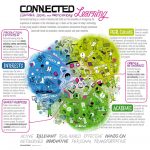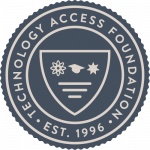
Time to Transform Public Schools – Part 4: All Together Now!
Welcome to Time To Transform Public School – Part 4! Take a minute to read Part 3 if you haven’t already, then come right back. This edition is primarily for the school staff–administrators, teachers and staff. We all know that planning work is much easier than actually doing it. In fact, I’d argue that we spend too much time with committees, focus groups, planning teams, etc. trying to get every detail right before taking the first step toward action. At some point you have to just get your hands dirty! Let’s say you’ve pulled your team together and your school culture has now been codified. Now it’s time to see who’s really on board and who isn’t–and there will be some who say they are, but they actually aren’t. This is the time where you get a chance to see who is truly committed and who has been so used to “going along to get along”.
It is absolutely critical that everyone believes and actively, intentionally participates in this work! Those who don’t want to, just need to find other places to work that fit their style of teaching because your behavior will reflect your beliefs, thereby hurting the students, and I know you don’t want to do that.
It is also absolutely critical for the principal to LEAD this effort and shield the school from unreasonable district demands that crop up from time to time.
Change is Good
Being a part of a transformation often means giving up some things, and for some of the staff it means giving up a lot. The idea here is to remove all the beliefs and behaviors that stifle student achievement and confidence. Recognize them and change them. To get everyone on the same page (at least initially) it may be good to do a simple exercise to envision what your school will be like in 5 years. Make sure everyone contributes and stays future-focused. This simple little exercise will give the principal a really good idea of who they can count on during the transformation and who they can’t. There may even be a few surprises. Now let’s get down to what needs to be changed and by whom.
Superintendent
The superintendent must truly sponsor this work. That means giving up a level of control they would normally have on the school. They have to trust that the principal will lead the school through the transformation while working to achieve the goals the superintendent set for the district. Most importantly, the superintendent can’t panic and pull the plug at the first sign of struggle, because there will be failures along the way, and the principal needs support more than anything during that time.
Principal
The principal has the toughest job in the transformation work–leadership. They must lead every aspect of this work with intentionality and fidelity. That doesn’t mean they are the sole decision maker and can run roughshod over the team. Decisions are made as a team, but ultimately the principal must lead the work.
The very first thing the principal has to do is see themselves as an instructional leader. All the administrative tasks they are required to do take away from really leading the school. That means figuring out another way to get the most mundane administrative tasks off the plate as soon as possible. They must entrench themselves in the work of transformation and understand the new model (whatever was agreed upon by the team) inside and out.
The principal must understand the strengths and weaknesses of their team in order to place them in a role that will get the most out of them and help them grow. And they must be willing to remove staff that are detrimental to the work (which really means they are detrimental to student development). This takes time.
Teachers and Para-educators
Here is where the rubber meets the road! Teachers and Para-educators are the closest to the students. They have the challenging job of knowing each student and how they learn. I would argue it’s the most important part of the job, not content knowledge. This is much more difficult for middle and high school teachers because they typically have anywhere from 120-175 students per year. In this case, it may be best for the teachers to create a “zone coverage” model for their cohort of students–basically a shared responsibility for the 120-175 students.
Moving in this direction will challenge beliefs and behaviors like never before. It is critical for teachers and para-educators to be open to examining their own failures, biases and need for improvement. It’s important that teachers and para-educators have a save space to do that and support each other through this personal development. Collaborate!
Teachers and para-educators must fully participate in all professional development required of the transformation. In addition, it’s great to pursue external opportunities for professional and personal development. It’s much easier to teach your students to be lifelong self-motivated learners if you do it for yourself.
Staff
Often when schools go through changes, the staff (administration, cafeteria staff, nurses, custodian, etc.) are left out of the mix. True school transformation requires these folks to play key roles in creating an environment that is safe, loving and welcoming. It takes a village and they are part of the village.
Who Else Can Help?
Over the last decade I’ve met many educators who have innovative ideas that never get implemented either because they don’t have time or they don’t have support. This is an ideal time to start talking about where to get support outside of the school and district. You can start looking for corporate/business, higher education, nonprofit and government support. Depending on the culture you’ve defined and/or the theme of your school folks from these industries can become a crucial part of your transformation. But you have to be crystal clear what your goals are and what you expect from there. You’ll read more in a later post about partnerships, but it’s important to start thinking about that now so you’re not scrambling later.
An Invitation to Participate in My Informal Research
Wouldn’t you like to know what your child’s school culture is and what is expected of them? So would I. Ask your principal this simple question: “How would you define the culture of our school?”. If you have time and the inclination to do so, please send me an email with the answer. I don’t need to know the name of the school, just whether it’s elementary, middle, high, K-8, K-12 or 6-12. You can email me at: trishmi@techaccess.org. Please use the subject “My School’s Culture”.
Thanks for taking the time to read this! I’m interested in your comments, so please do.





